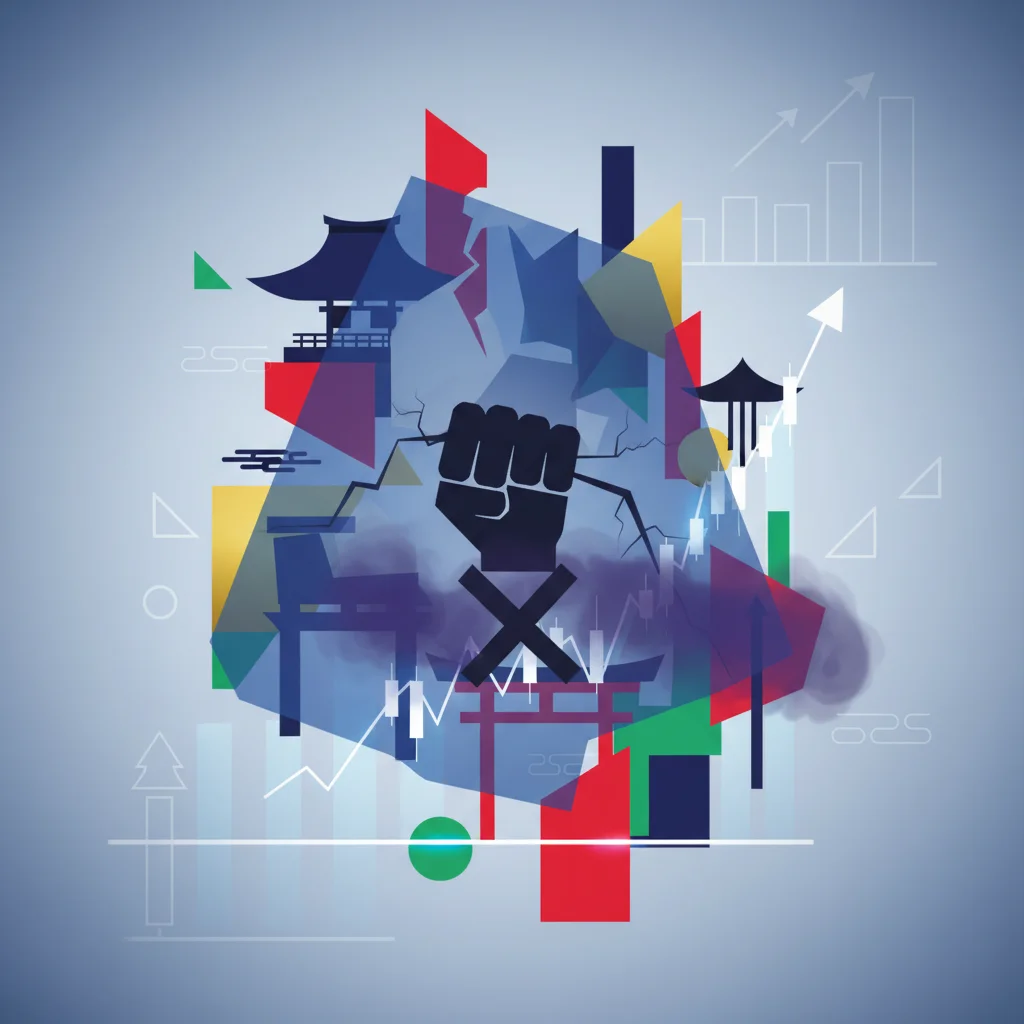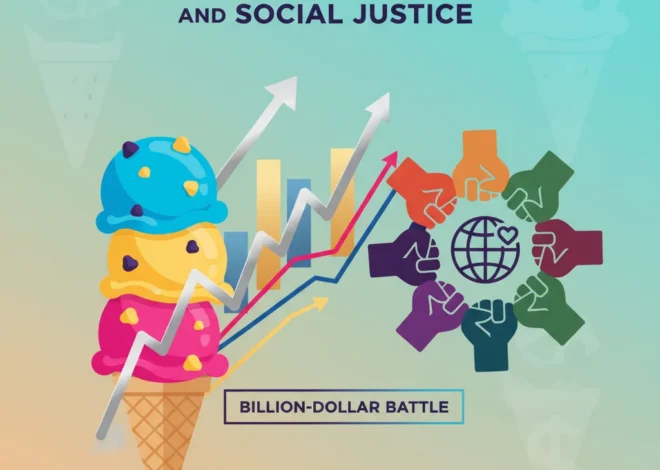
The Hidden Tax on Japan’s Economy: Why Workplace “Pawahara” Is a Critical Risk for Investors
For decades, investors analyzing the Japanese stock market have focused on familiar metrics: P/E ratios, corporate governance reforms, and the Bank of Japan’s monetary policy. But a subtle yet powerful risk factor is emerging from the cubicles and conference rooms of corporate Japan, one that directly impacts productivity, innovation, and ultimately, the bottom line. It’s a phenomenon known as “pawahara,” or power harassment, and a recent, unprecedented move by a major Japanese company has brought this hidden economic drag into the spotlight.
Asahi Group, the beverage giant behind brands like Peroni and Asahi Super Dry, has published what the Financial Times calls a “Baedeker of beastliness”—a detailed catalogue of workplace microaggressions. This isn’t just an internal HR memo; it’s a public acknowledgment of a deeply ingrained cultural issue and a signal of a seismic shift in tolerance. For anyone involved in finance, investing, or leading a business with ties to Japan, understanding this evolution is no longer optional. It’s a crucial component of risk assessment and a key indicator of future corporate performance.
Decoding “Pawahara”: More Than Just a Bad Boss
“Pawahara” (パワーハラスメント) is a Japanese term that goes beyond the Western concept of bullying. It specifically refers to harassment that leverages a power imbalance, typically from a senior employee to a junior. This can manifest not just in overt aggression, but in a series of subtle, corrosive behaviors that chip away at morale, stifle creativity, and cripple team cohesion. Historically, these behaviors were often dismissed as a traditional, albeit harsh, form of management—the “iron fist” approach to forging disciplined employees.
However, what was once tolerated as a rite of passage is now being identified as a significant liability. The publication by Asahi Group is a landmark event. Instead of vague platitudes about respect, the company has itemized specific toxic behaviors. This move from the abstract to the specific is a critical step in addressing the problem systemically.
Below is a summary of the types of behaviors outlined, which serve as a clear guide for what is no longer acceptable. This level of granularity is what makes the document so powerful.
| Category of “Pawahara” | Examples of Unacceptable Behavior |
|---|---|
| Physical Aggression | Any form of physical contact, including pushing or throwing objects. |
| Psychological Aggression | Intimidation, verbal threats, slander, and public humiliation. |
| Social Isolation | Deliberately ignoring an individual, excluding them from meetings or communications. |
| Excessive Demands | Assigning tasks that are clearly impossible to complete or irrelevant to the employee’s role. |
| Minimal Demands | Assigning tasks far below an employee’s skill level to demean or underutilize them. |
| Invasion of Privacy | Excessive meddling in an employee’s personal life outside of work. |
Source: Based on the catalogue of microaggressions detailed in the Financial Times report.
By defining these actions so clearly, companies can create a framework for accountability. This is a far cry from the opaque, hierarchical structures of the past, where such grievances were often suppressed.
The Trillion-Dollar Pivot: How Qatar's Financial Muscle is Reshaping Global Alliances
The Economic Fallout: Connecting Culture to Corporate Value
A toxic work environment isn’t just an HR issue; it’s a direct threat to a company’s financial health and a nation’s economy. The consequences of widespread pawahara are a significant drag on Japan’s economic potential, impacting everything from labor productivity to innovation.
Here’s how the damage unfolds:
- Suppressed Innovation: In a culture of fear, employees are less likely to voice new ideas, question inefficient processes, or take calculated risks. This is poison to companies in competitive global sectors like financial technology and advanced manufacturing, where constant innovation is the only path to survival.
- Increased Employee Turnover: The “job for life” model in Japan is eroding. Younger generations, with a lower tolerance for pawahara, are more willing to switch employers. The cost of recruiting, hiring, and training new staff is a direct hit to the P&L statement. High turnover is a red flag that should concern any serious investor.
- Reduced Productivity: A psychologically unsafe environment leads to stress, burnout, and disengagement. Employees who are constantly on edge are not performing at their peak. Japan has long struggled with white-collar productivity compared to other G7 nations, and pawahara is undoubtedly a contributing factor (source).
- Damaged Brand Reputation: In the age of social media and ESG (Environmental, Social, and Governance) investing, a reputation for a poor work culture can damage a company’s brand, making it harder to attract top talent and conscientious consumers.
For those in the banking and trading sectors, this dynamic might feel familiar. The high-stress, high-stakes cultures of trading floors have undergone significant scrutiny and reform over the years precisely because firms recognized that a burnout culture was ultimately bad for business. Japan Inc. is now facing its own moment of reckoning.
St. James's Place's High-Stakes Gamble: Can a Titan of Finance Reinvent Itself?
The next frontier will be in measurement and enforcement. Will we see the rise of HR-focused fintech solutions that help companies anonymously survey and track workplace sentiment? Could a company’s “pawahara score” become a standard metric for analysts, much like a credit rating? The comparison to blockchain is apt here; what’s needed is a transparent, immutable way to verify that a company’s stated cultural values match the lived reality of its employees. The companies that lead this charge won’t just be better places to work—they will likely be better long-term investments.
A Generational Tipping Point
The catalyst for this change is not coming from the top down, but from the bottom up. A new generation of Japanese workers, digitally native and more exposed to global workplace norms, is simply refusing to accept the old ways. They have seen that other models are possible and are voting with their feet.
This generational shift presents both a challenge and an opportunity for the Japanese economy. The challenge is for legacy companies, burdened by rigid hierarchies, to adapt or risk becoming obsolete. The opportunity is immense: by fostering healthier, more dynamic work environments, Japanese companies can unlock a new wave of creativity and productivity. This is the key to revitalizing an economy that has faced decades of stagnation.
The government’s push for better corporate governance aligns perfectly with this cultural shift. Prime Minister Fumio Kishida’s “New Form of Capitalism” emphasizes investment in human capital. Eradicating pawahara is one of the most effective ways to do this, transforming human capital from a depreciating asset into a source of appreciating value. A positive feedback loop is created: better culture leads to better performance, which in turn drives higher valuations on the stock market and attracts more foreign investment.
HMRC's Crypto Crackdown: What Every UK Investor Needs to Know
The Investor’s Takeaway: Look Beyond the Balance Sheet
The key lesson from the “Baedeker of beastliness” is that the intangible asset of corporate culture has a very tangible impact on financial returns. For investors, analysts, and business leaders, the focus must expand beyond traditional economics and financial statements.
It’s time to start asking new questions when evaluating a Japanese company:
- What specific, public steps has the company taken to define and combat power harassment?
- What are the company’s employee turnover rates, particularly among younger staff?
- How does the company solicit anonymous feedback and what mechanisms are in place for grievance reporting?
- Does the company’s leadership team reflect a modern, inclusive approach to management?
The slow, subtle erosion caused by pawahara has acted as a hidden tax on corporate Japan for generations. The companies that are now actively working to eliminate it are not just improving society; they are sharpening their competitive edge. As an investor, finding these forward-thinking companies is no longer just an ethical choice—it’s a fundamental tenet of sound financial strategy.


